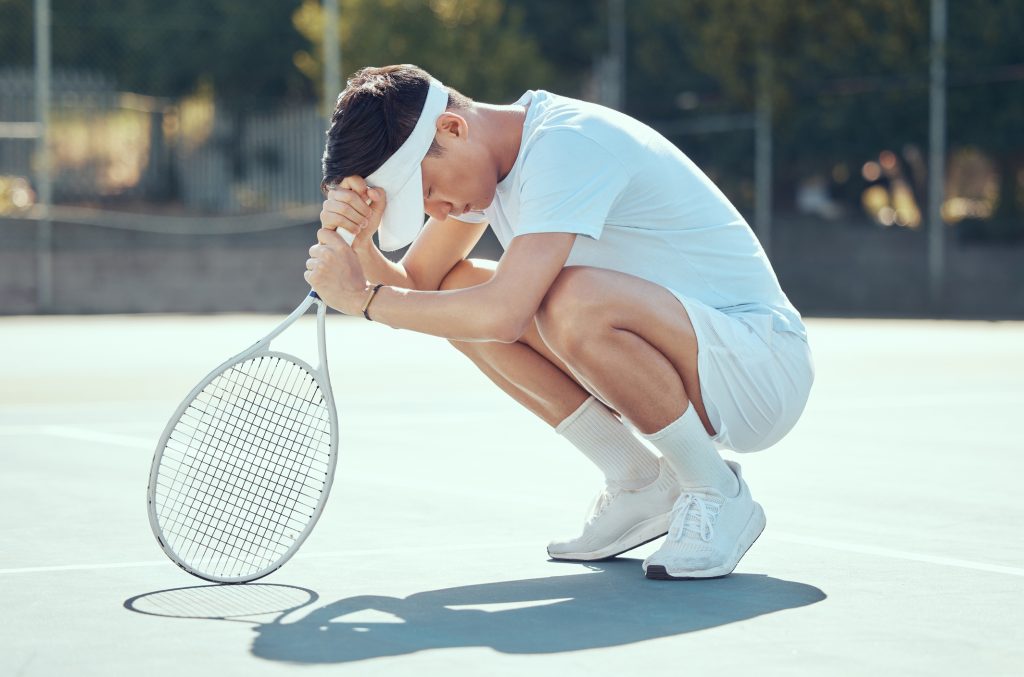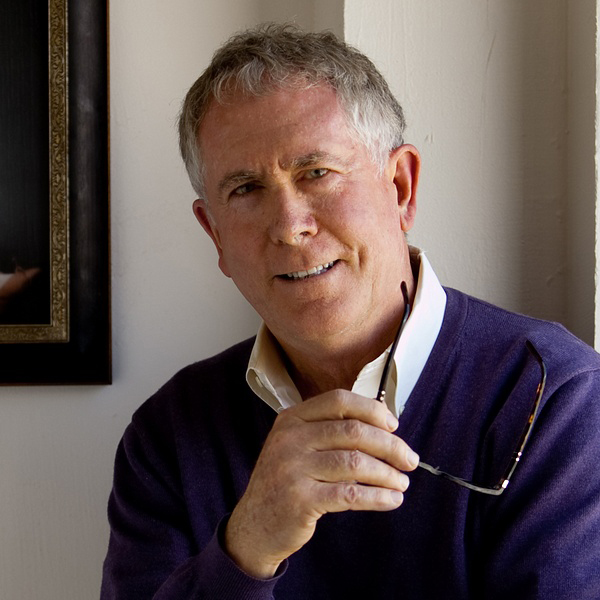A Look at The Mental Side of Tennis…

Sometimes, as a tennis player, you exist on an island. Alone, solo, under the lights of your local club or drenched in the sun, there you are … between the lines, either gaining the accolades of glory hitting the winning shot or facing the weight of defeat. There are no teammates to pass to; no backup in case you throw a bad pitch or have a bad shift; no defense to pick you up after the offense turned the ball over…it’s just you who must deal with the adversity of this individual sport.
Mental toughness is what gives top players a competitive leg up over the opposition. Training one’s mind to deal with nerves, anxiety and quickly move onward past mistakes can be the difference between being crowned “champion” and “finalist.” These individuals help players focus, find their groove and enter the zone to success. It’s the ability of the player to quickly get back on track once rattled that can make the difference between bowing out in the first round of a tournament or hoisting the trophy at the end of the day.
Long Island Tennis Magazine was fortunate enough to sit down and chat with multiple experts in the field of sports psychology to pick their brains and gain insight into their role as one of the most vital members of a tennis player’s support staff.

Dr. Tom Ferraro is a sport psychologist with a Ph.D. from SUNY Stony Brook, with more than 25 years of experience working with professional teams, coaches and Olympic athletes across a broad range of sports. Dr. Ferraro is a board-certified psychoanalyst, which allows him to properly diagnose and treat the symptoms an athlete may bring to his him and help them understand any underlying reasons for self-defeat. He has been published internationally and has been featured in the New York Times, The Wall Street Journal, The London Times, and is a regular contributor to this publication.

Rob Polishook, MA, CPC is the founder of Inside the Zone Sports Performance Group. As a mental training coach, he works with the whole human athlete helping them to unleash their mental edge (heart.energy.spirit) through mindfulness, somatic psychology, animal wisdom and mental training skills. Rob is author of 2 best-selling books: Tennis Inside the Zone and Baseball Inside the Zone: Mental Training Workouts for Champions. He can be reached by phone at (973) 723-0314, by e-mail rob@insidethezone.com, by visiting insidethezone.com, following on Instagram @insidethezone.
What is the best way to manage bad calls made by an opponent or a referee?
Ferraro: Bad calls made by an opponent or referee are very common. The correctness of a call is often tough to determine since it is difficult to accurately assess from a far distance. Invariably, you will feel that calls are unfair and this causes anger. The best way to manage this is to channel the anger into aggression on the court. The ability to channel anger into focus and good game play is one of the keys to winning.
What can a player do when they are in pressure situations such as closing out a match? What can they do to settle down?
Polishook: First off, it’s important to note that this usually happens because the player is focusing on something outside of their control, the outcome and winning. Their thoughts are about “one more game” or “if I win this game, I will win this set.” Both of these thoughts have to do with the future, thus both are out of their control. Now, of course, it’s natural to have all kinds of thoughts when competing, however, the key is which thoughts will you attach to? And which thoughts will you let go and bring yourself back to thoughts and a place that you can control? I suggest shifting your focus to W.I.N., which stands for What’s Important Now. When a player focuses on what’s important in the here and now, the outcome is no longer their main thought, rather the answer may be to take an extra few second to towel off, settle down by using their breath, and then go through their pre-serve routine or return routine. This shift in focus takes them out of the future and into the present moment. The ability to know when you have lost focus and come back to center in a balanced and calm place is the goal. From this place a player can play the next point to their best.
How does one a player regain the joy of tennis? (See full article in this volume for a full exploration of this important subject)
Ferraro: Competitive youth tennis has virtually destroyed the joy of playing the game. Thanks to the presence of social media, rankings, scouting and getting Division I scholarship have become obsessions. The atmosphere created by social media destroys the fun of tennis and many young players talk about quitting the game they once loved because of pressure, overzealous coaches and over-involved parents. I once did an article about Swedish golfers and why they were all so dominant despite the fact that Sweden is a cold place to live. The main reason is that the less pressure and hype the young player is exposed to, the greater the chance they will find joy and optimal performance. Where is it written that you have to be the next Roger Federer or Novak Djokovic in order to enjoy the game of tennis? The answer is that it isn’t written anywhere. Let’s push for a little more happiness.
Parents often share with me that their son or daughter tends to give up when they are behind; they seem to throw in the towel! What can they do?
Polishook: What’s important to understand is what the player is experiencing at this moment. Usually, the player is in an overwhelmed state because they are focused on the outcome. They are scared to lose, more so, they feel trapped and helpless. This results in the deer in the headlights look! What they are not focused on is what they need to do to problem solve. They are focused on the threat of losing, as opposed to the challenge of competing. I call it threat vs. challenge. When a player can shift to a challenge mentality, they will play from a problem-solving mentality. Again, from this place, the player’s energy will be about what’s important now. What do I need to do to change the momentum of the match? How can I change the patterns? And most importantly, if I looked at this as a challenge vs. a threat, what would be different in my mentality? Adapting this mentality is really the game within the game.
What are the signs and symptoms of burnout?
Ferraro: Burnout is as common of an occurrence there is in youth tennis. There are phases of burnout. In Phase One, performance flattens and the player begins to play in a stale, unenthused manner. In Phase Two, the athlete becomes prone to illnesses as the immune system depletes itself due to exhaustion and lack of sleep. And in Phase Three of burnout, the athlete becomes injury prone with due to overuse of muscles. This can even lead to career ending injuries. If you find yourself in any of these phases of burnout, it’s time for rest and recovery.
What do you think is the most important mental attribute for a player to succeed and maintain consistency as they develop through the age brackets and college and possibly professional tennis?
Polishook: There are a lot of components to this question. However, I would share with the player, parents and coach that the most important attribute is balance. It’s important that there is an understanding that there will be ups and downs, and the focus must be long term and on the process, not the immediate results. To gain this balance, I believe that the player, coaches and parents must not lose sight of the personal talents that the player has in addition to their physical talents. A person’s unique cultural experiences are also imperative, the things that don’t make them better or worse than another player, but makes them who they are. Tennis is not who the player is, rather it’s what they do. When a player and team understand this, they recognize that the outcome is not personal, and perfection is not required. The player does not need to protect anything, and they have nothing to prove. From here, the focus can be on “just playing” and “just competing” and being their best. Imagine how freeing this would be for a player? It would allow them to focus on the process, and make adjustments based on what happens rather than judging them. There is no such thing as a bad loss, but instead it’s something to learn from.






